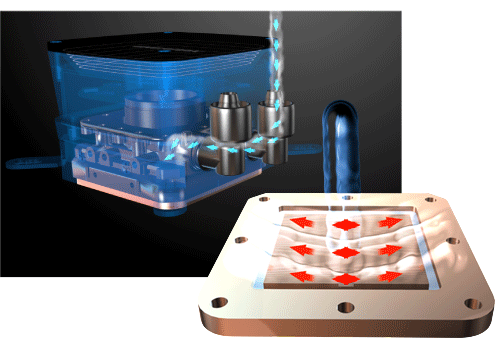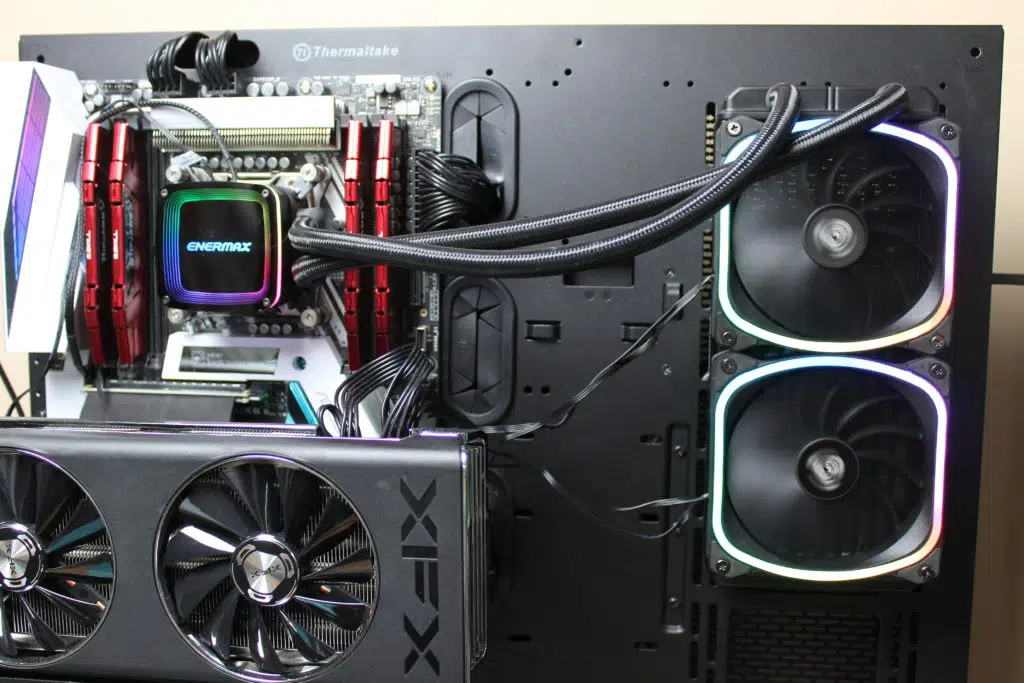Introduction
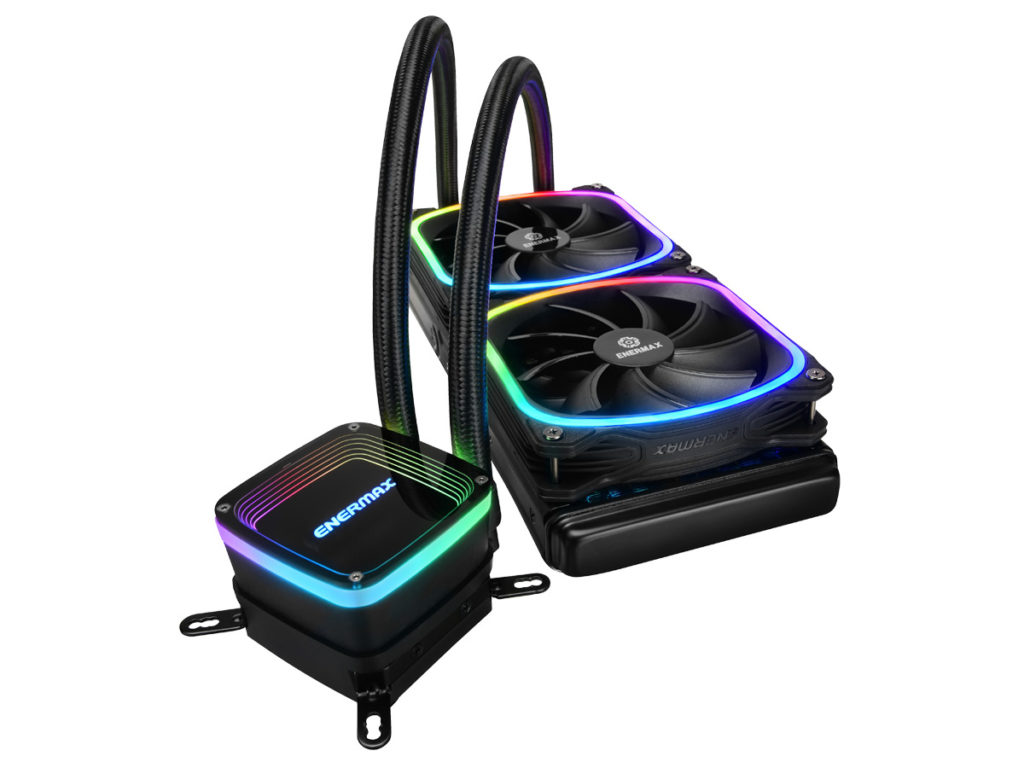
Today marks the third review that we will be using our new AIO test platform that is capable of putting out enough heat to make even the devil sweat. We do this to test AIO water cooling solutions that we are likely to use with some of today’s most demanding CPUs. So, on the bench today is the Enermax AQUAFUSION 240 (ELC-AQF240-SQA) liquid cooler which is currently a mid-range product in Enermax’s product line. It is also available in a white flavor under the part number ELC-AQF240-SQA-W.
Enermax AQUAFUSION 240 Overview
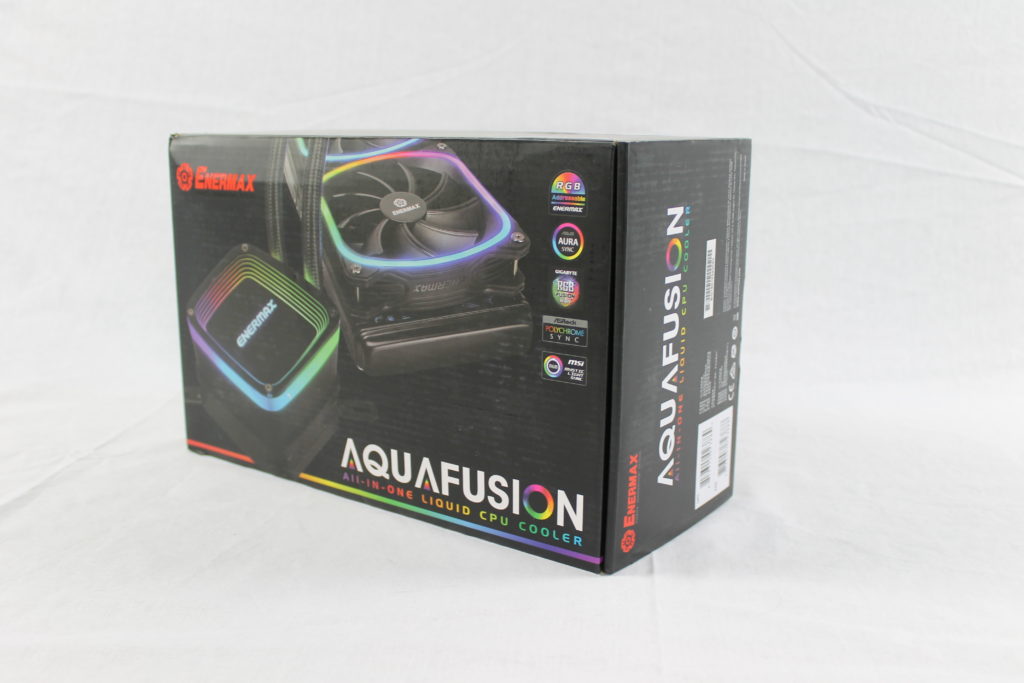


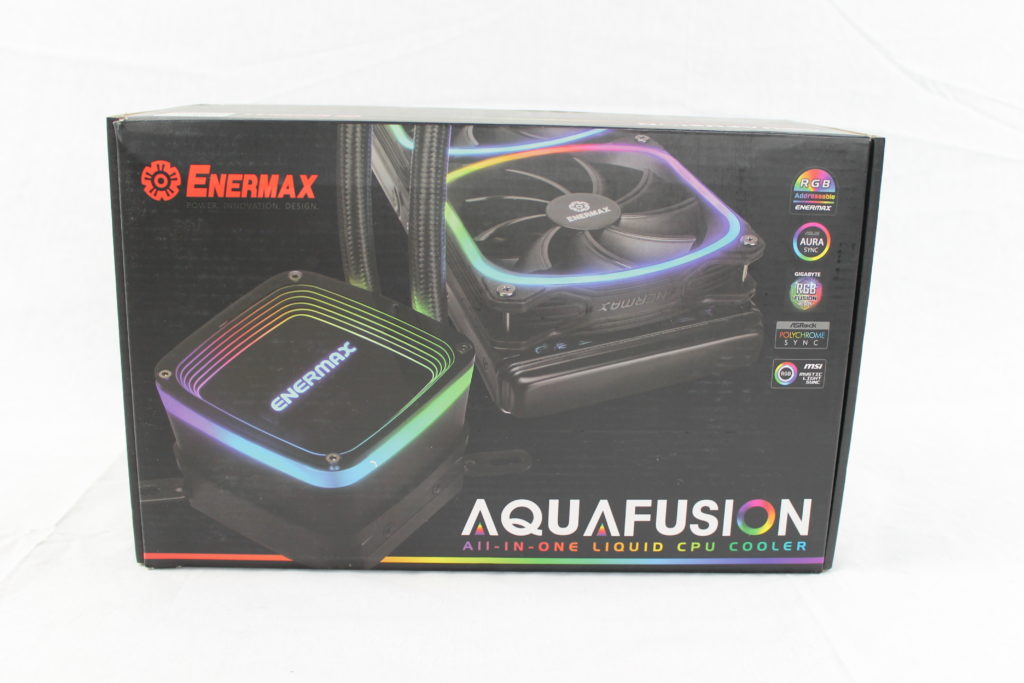
The Enermax AQUAFUSION 240 AIO cooler is an all in one CPU cooler that is designed to work on a wide variety of sockets, including Intel’s LGA 1200/2066/2011-3/2011/1366/1156/1155/1151/1150 and AMD’s AM4/AM3+/AM3/AM2+/AM2/FM2+/FM2/FM1. While this covers most high-end desktop processors, it is not compatible with the Threadripper’s TR4 socket. The tubes connecting the water block to the radiator measure 400mm (much as we saw with our previous Enermax LIQTECH II 360mm unit).
Aurabelt RGB Water Block
The water block features a “Central Coolant Inlet” design along with a patented “Shunt Channel Technology” on the cold plate and directs the coolant to the hottest area within the block to quickly cool the processor. The shunt inside the micro fin structure optimizes the “Boundary Layer” effect which eliminates hot spots for better heat dissipation. This is coupled with a copper cold plate.

The cube-shaped water block includes the pump and measures approximately 70mm x 70 mm x 55mm.
Pump


The pump used with the AQUAFUSION 240 is a dual-chamber design that utilizes ceramic bearings in order to ensure maximum performance. This design is supposed to result in an excellent performance as well as an extended cooler lifespan. The pump sports a motor speed default of 2,000 RPM and a rated MTBF of 50,000 hrs.
Radiator

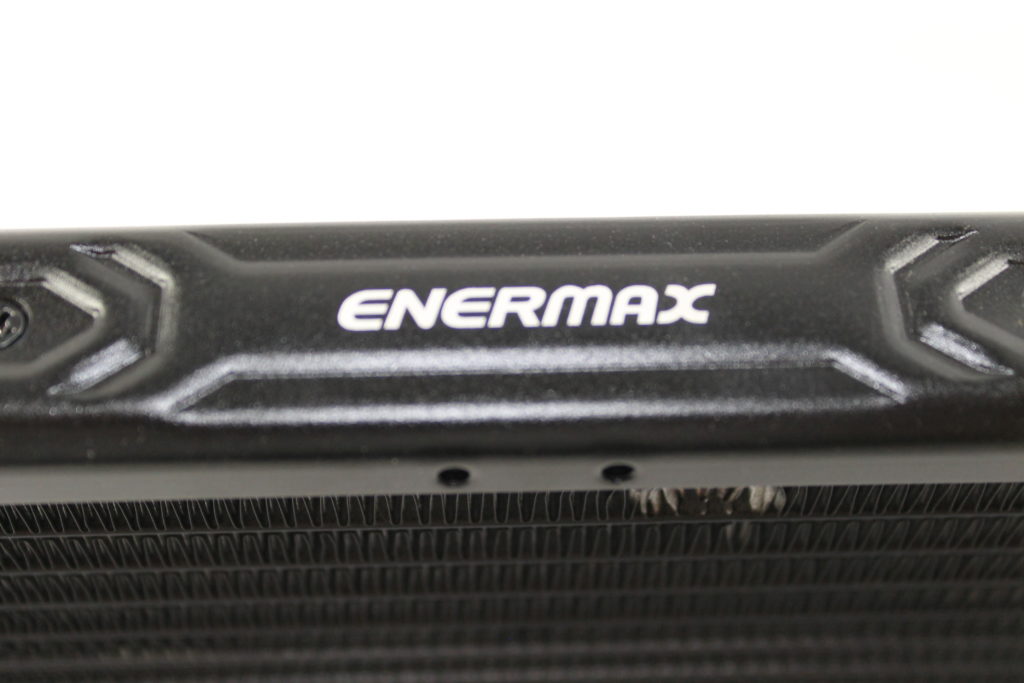
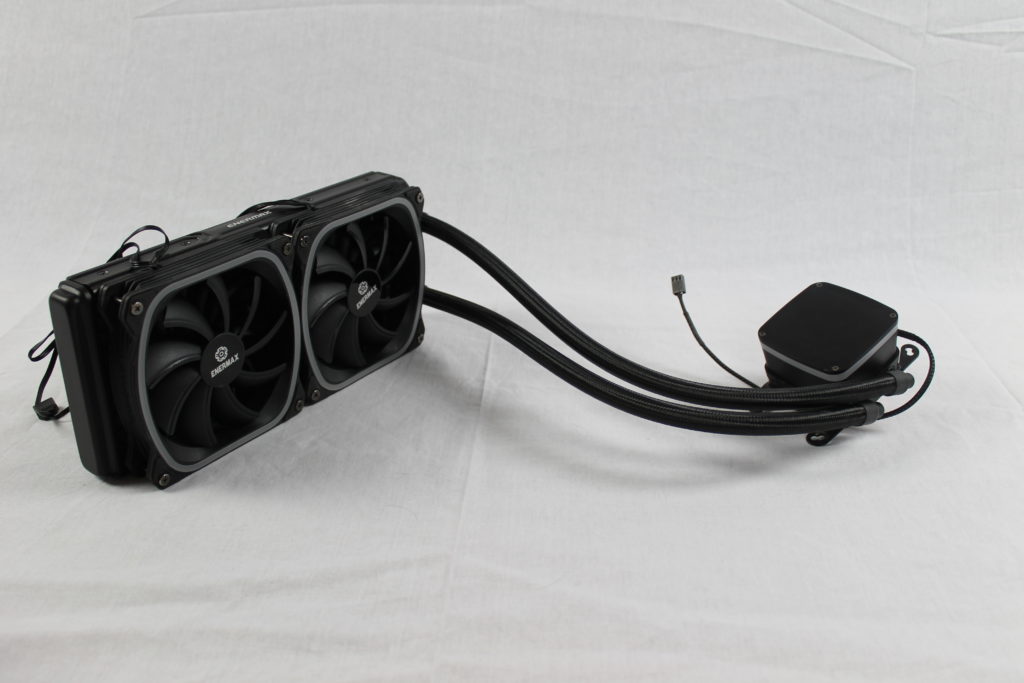
The radiator is designed to hold two 120mm fans and measures 274 mm x 120 mm x 27 mm and “The channels are meticulously designed (sic), combined with thin aluminum fins to deliver high heat exchange capacity” per Enermax’s advertising. By our count, the aluminum radiator sports a density of 22 fins per inch.
Fans
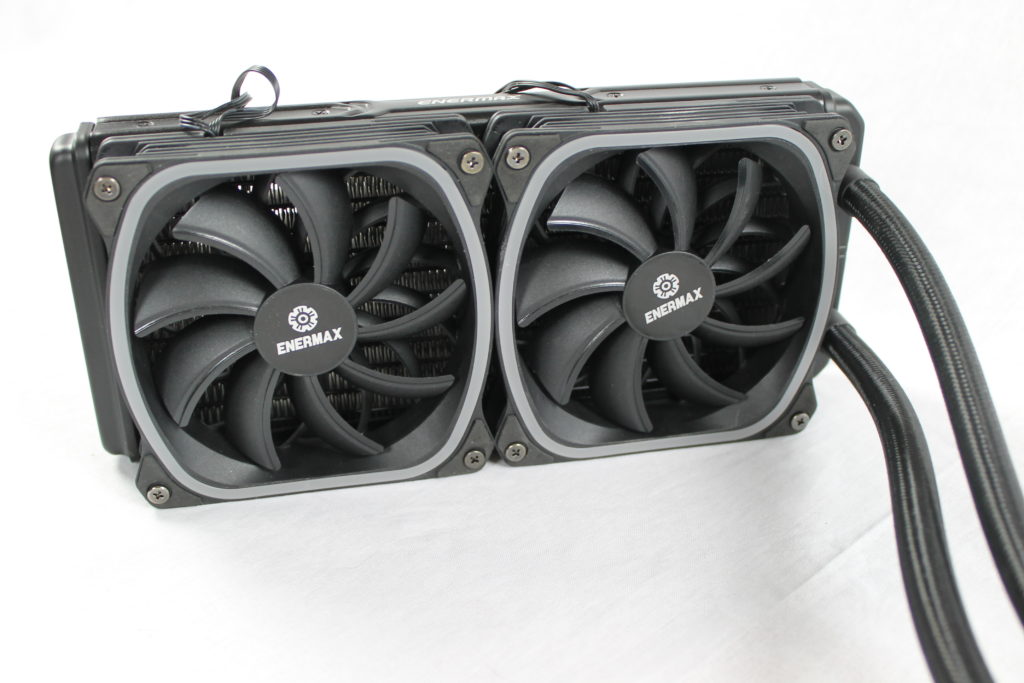
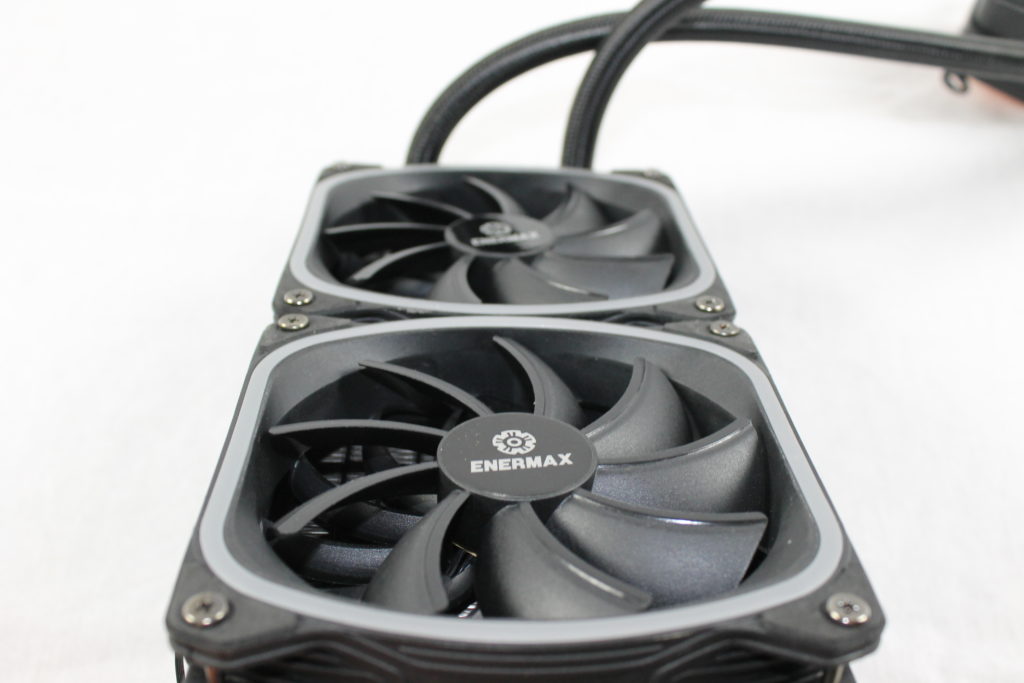
The included Enermax SquA PWM RGB fans area 9 bladed square-framed fans that have a hydro bearing design and are rated for an MTBF of 100,000 hours (at 25C). The hydro bearing equipped SquA fans to support a fan speed of 300 to 1,500 RPM at a reported noise level of 12 to 23 dB(A). The stated airflow is 41.67 to 115.99 CFM with a static pressure of 0.17 to 1.898 mm H2O. The design of the blades and frames is supposed to optimize the airflow so that these fans give “40% more airflow than other RGB fans”.
RGB
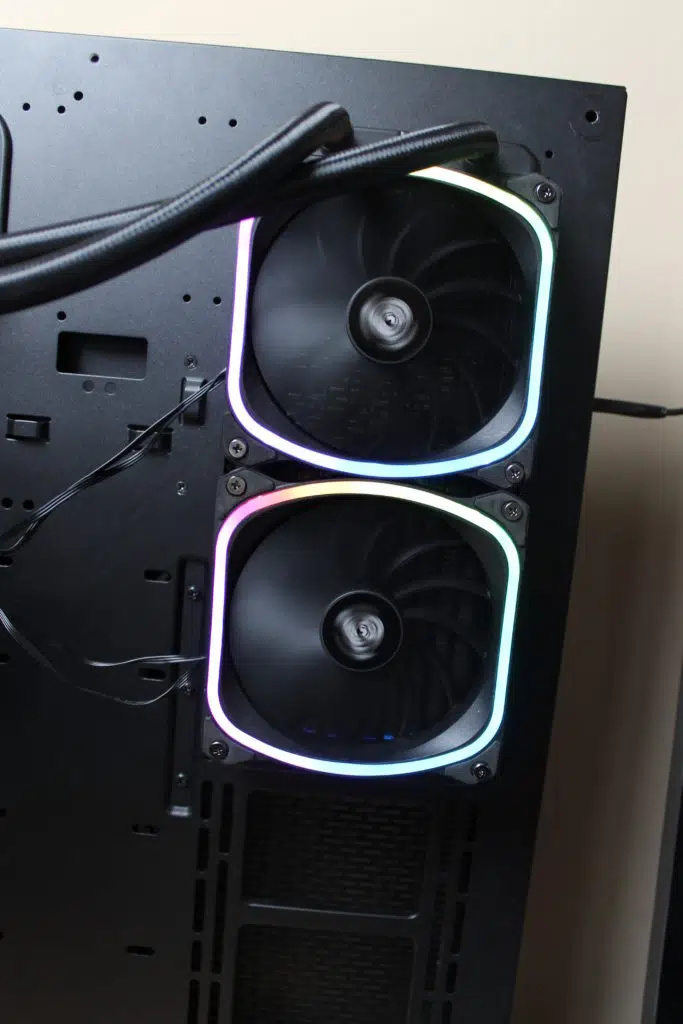
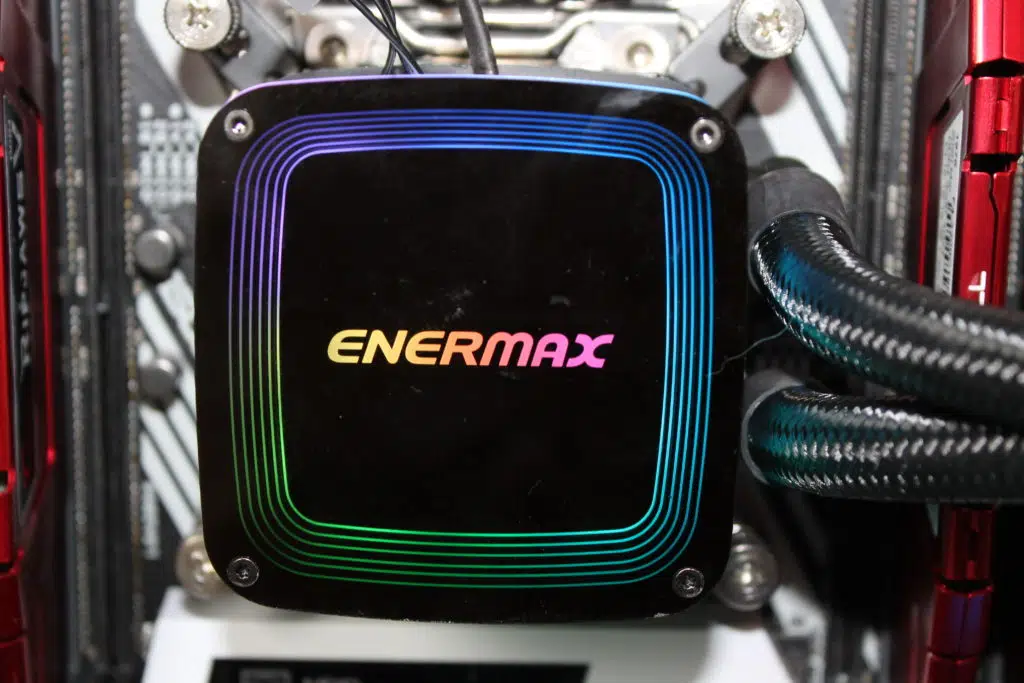
The AQUAFUSION 240 has an addressable RGB water block as well as the addressable SquA fans. The RGB connectivity is provided through a 3 pin ARGB (5V/Data/Ground) connector and is compatible with ASUS, AsRock, MSI, Razer Chroma, and GIGABYTE boards. Secondarily, there is an Enermax RGB control box included as well to serve as a fallback option for those folks who do not have a compatible motherboard or wish to control their light show through a separate controller. The Enermax included controller in the box has a number of lighting modes available such as Racing-Rainbow (Default), Breathing-Rainbow, Flash-Rainbow, Overlaying-Rainbow, Flow-Rainbow, Colors auto-run (8 colors), Ripple auto-run (8 colors), Overlaying-RED, Overlaying-GREEN, Overlaying-BLUE.
Let’s move on now to our test setup and installation of the Enermax AQUAFUSION 240.

